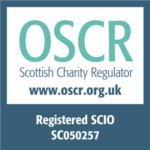Community organisation Save our Shore Leith (SOSLeith) campaigns against the impact of sewage outflows and the lack of monitoring in the Water of Leith – Jim Jarvie explains why and what needs to change.
The issue of raw sewage flowing into Scotland’s rivers and seas is ongoing. A freedom of information request obtained by The Ferret from Scottish Water found that sewage was discharged into Scottish waters more than 12,000 times in 2020.1
Why is this happening?
The U.K. has a combined sewage system. This means that rainwater runoff mixes with household wastewater and sewage in the same pipes. All of this is usually carried to sewage treatment plants. But, during heavy rainfall, the capacity of these pipes can be exceeded. To prevent potential backup into homes and public spaces, sewage is spilt, untreated, into rivers and seas through combined sewage overflows (CSOs). This is referred to as an ‘overflow event’ (see Figure 1).

Sewage in the Water of Leith
At the Water of Leith around The Shore in northern Edinburgh there is a great deal of silt that has accumulated causing water depth to be down to a few centimetres where it was historically up to 7 metres. This is a result of the installation of a sea gate in the 1960s slowing the river drastically at this point. 8 CSOs are discharging into the water here and sewage can be retained in the silt and not washed out to sea (see Figure 2).

A lack of monitoring
Scottish Water acknowledges that none of the 65 CSOs along the entire length of the Water of Leith, including the 8 CSOs around The Shore are monitored. There is no information on how often or how much sewage-related debris is discharged into the Water of Leith at The Shore or further upstream. In Scotland, just 10 per cent of CSOs are monitored by Scottish Water. This means the number of overflow events in 2020 is likely higher than 12,000.2
Community concerns
SOSLeith raised the following unanswered questions with Scottish Water, the Scottish Environmental Protection Agency (SEPA), the City of Edinburgh Council and the Scottish Government about sewage releases into the lower basins of the Water of Leith:
- Is sewer-related debris being trapped in silt beds, and is there resultant bacteria present?
- What risk does this pose to an urban population with one of the highest densities in Scotland?
- How will this risk increase with new residential and commercial development?
- What health risk is faced by river users, including kayakers, people fishing, and maintenance staff working on barges and the water?
- Is there a long-term risk to people visiting the numerous riverside restaurants, bars, shops, and hotels concentrated along The Shore?
The fight against sewage-related debris
In 2021, SOSLeith agreed on an agenda to build on the Marine Conservation Society’s Scottish Parliamentary briefing and to campaign to reduce the impact of sewage-related debris. They called on SEPA and Scottish Water to immediately:
- Start electronic monitoring of all CSOs. At a minimum, this should include the frequency and duration of spills. Data should be published on an annual basis along with performance targets by 2024
- Invest in measures to mitigate sewage discharge
- Move from considering sewage pollution exclusively its problem to looking outward and treating it as a community endeavour to promote green and blue infrastructure.
To gather information, raise awareness and campaign for change, SOSLeith has regularly engaged with public bodies, Council, the Scottish Government and individual elected representatives. SOSLeith is a small, community-based organisation. Challenging institutions like Scottish Water and the Scottish Government over legislation concerning large-scale sewage discharges into the local environment is daunting. ERCS has supported SOSLeith in understanding legislation, how to conduct FOI requests, and how to follow up when institutions provide vague and unusable feedback, all toward getting clarity and accountability from our public bodies. This is an ongoing process and SOSLeith is grateful for the support it receives.
Voices for justice
Everyone has the right to safe water and adequate sanitation
The lack of monitoring of sewage discharge into the Water of Leith means there is no information on the risk that it poses to the public and environment. Despite their campaign, SOSLeith has received no clarity on how Scottish Water, SEPA, and the Scottish Government work together to reduce sewage in the Water of Leith and rivers and seas across Scotland.
The lack of a clear stakeholder participation strategy involving the local community and community councils must be addressed. The community needs to be informed about work plans, deadlines, and key performance indicators to monitor progress where actions have been promised, notably by Scottish Water.
SOSLeith is calling for their right to a safe and clean environment. They are calling for the following:
- Coordination with the community
- Assessment of any potential hazards to human health and the environment posed by sewage becoming trapped in the silt and slow-running water along The Shore
- Information on how much and how often sewage is being released into the Water of Leith
- A clear action plan for mitigating CSO spillage into the Water of Leith, with clear timelines and Key Performance Indicators.
Sewage discharge into the U.K.’s rivers and oceans is a significant focus of community and media comment across the country, rightfully causing widespread outrage and disgust. SOSLeith is one of many community and not-for-profit organisations calling for Scottish Water and the Scottish Government to work more effectively for people and the environment.
Written by Jim Jarvie, SOSLeith, January 2023.
You can find out more information from SOSLeith’s position paper on CSOs.
See SOSLeith on Facebook and Twitter.
References
- The Ferret (4 Jul 2021), Sewage spilled into Scotland’s waterways more than 12,000 times
- The Ferret (13 Nov 2021), Scotland ‘way behind’ England on tackling sewage leaks




